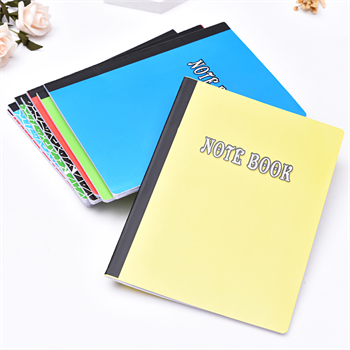In the age of digital innovation, the humble notebook has undergone a remarkable transformation, transitioning from paper pages to digital screens. This evolution has redefined how we capture thoughts, ideas, and information. In this article, we’ll explore the journey of notebooks, from their paper-bound origins to their digital mastery, and how these changes have revolutionized the way we organize and engage with content.
The Legacy of Paper Notebooks: Paper notebooks have been an indispensable tool for generations, serving as a canvas for thoughts, sketches, and notes. Their tactile nature allowed for a direct connection between pen and paper, fostering creativity and personal expression. However, paper notebooks had limitations in terms of organization, searchability, and accessibility.
The Rise of Digital Notebooks: The advent of digital technology brought forth a new era of note-taking. Digital notebooks, housed in applications and platforms, offer unparalleled versatility. They allow users to create, edit, and organize content effortlessly. Features like cloud synchronization, handwriting recognition, and advanced search capabilities have propelled digital notebooks into the modern age.
Unleashing Creativity: Digital notebooks have not only replicated the tactile experience of paper but also expanded the creative possibilities. Users can sketch, write, and annotate with styluses, transforming their screens into digital canvases. This convergence of technology and creativity has revolutionized artistic expression and design workflows.
Efficiency and Organization: One of the primary advantages of digital notebooks is their organizational prowess. Notes, documents, images, and even audio recordings can be categorized, tagged, and easily retrieved. This level of organization simplifies information management and enhances productivity.
Seamless Collaboration: Digital notebooks are tailored for collaboration. Multiple users can contribute to a single notebook in real-time, transcending geographical boundaries. This collaborative environment fosters teamwork, idea sharing, and streamlined project management.
The Hybrid Approach: The evolution of notebooks has also led to a hybrid approach where digital and paper coexist. Smart notebooks, equipped with QR codes and specialized paper, bridge the gap between analog and digital. Handwritten notes can be instantly digitized, combining the tactile charm of paper with the convenience of digital storage.
Customization and Personalization: Digital notebooks offer a range of customization options, from choosing different paper templates to selecting fonts and colors. This level of personalization enhances the user experience, making note-taking a more engaging and tailored process.
Environmental Impact: The shift towards digital notebooks has environmental implications, reducing paper consumption and minimizing waste. Digital notebooks align with sustainability goals and contribute to a more eco-friendly approach to information management.
In conclusion, the evolution of notebooks reflects our changing relationship with technology and information. The journey from paper to digital has brought about new dimensions of creativity, organization, collaboration, and environmental consciousness. As we embrace the digital mastery of notebooks, we celebrate the convergence of tradition and innovation, enabling us to capture and engage with knowledge in ways that were once unimaginable.







